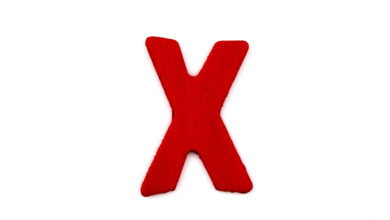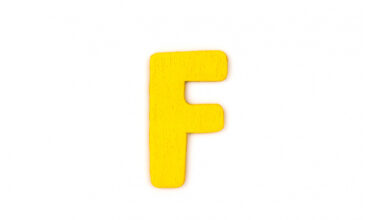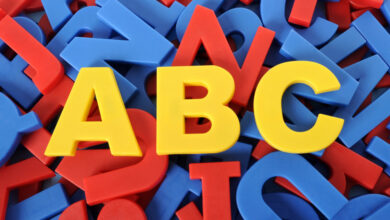Cursive J: How to Write and Use This Elegant Letter in Cursive

The art of cursive writing has been cherished for centuries, bringing elegance and style to handwritten communication. Among cursive letters, the “Cursive J” holds a unique place for its flowing design and slightly challenging stroke pattern. Whether you’re looking to learn cursive for artistic purposes or simply wish to improve your handwriting, mastering the “Cursive J” can be both rewarding and enjoyable. In this article, we’ll dive deep into how to write a “Cursive J,” why it’s so distinctive, and practical tips for mastering it in your handwriting.
What is the “Cursive J”?
The “Cursive J” is a stylized letter that incorporates flowing loops and curves, differentiating it from the more angular print version of the letter “J.” Cursive letters are designed to connect seamlessly with other letters, creating a fluid and continuous motion. The “Cursive J” stands out for its intricate shape, often requiring a little extra practice due to its unique structure. Unlike most lowercase letters, the “Cursive J” has both a top and bottom loop in many styles, creating a balanced and elegant look.
Step-by-Step Guide to Writing the “Cursive J”
Writing a “Cursive J” can be a little tricky for beginners, but with a few steps, it becomes much easier to master. Here’s a simple breakdown to help you create a flawless “Cursive J”:
- Start at the Top: Place your pen at the top of the line, ready to create a downward stroke.
- Make a Small Curve: Begin with a slight upward curve to the left before curving downward. This forms the top loop of the “J.”
- Sweep Downward: After the top loop, bring your pen down in a straight or slightly curved line, forming the main stem of the letter.
- Create the Bottom Loop: At the bottom, loop the line to the left, then back up slightly, creating the second loop at the base.
- Connect if Needed: If the “Cursive J” is in the middle of a word, you can connect it to the following letter seamlessly by extending the line after the bottom loop.
The more you practice, the more fluid and natural your “Cursive J” will look.
The Historical Background of the “Cursive J”
The cursive writing style has roots in ancient civilizations, with variations in form and complexity throughout history. Originally, cursive writing served practical purposes, such as making handwriting faster and more efficient. The “Cursive J” we see today, especially in English cursive, evolved during the Renaissance, when calligraphy gained popularity across Europe. Over time, the “Cursive J” developed into the flowing form we use today, with specific nuances in its style depending on regional influences.
Why is the “Cursive J” Important?
Learning cursive, including the “Cursive J,” is not only about beautiful handwriting but also about improving motor skills and cognitive abilities. Studies show that learning cursive writing can enhance fine motor skills, boost memory, and even support literacy development in children. The “Cursive J,” along with other letters, requires a unique hand movement that strengthens these skills. Additionally, cursive writing connects us to a timeless tradition, bridging generations through a shared method of written expression.
Tips for Practicing the “Cursive J”
- Use Practice Sheets: Start with cursive practice sheets that guide you in the direction of each stroke. Many resources offer downloadable sheets focused solely on specific letters, including the “Cursive J.”
- Slow Down Your Strokes: It’s easy to rush through cursive letters, but taking your time to form each part of the “Cursive J” correctly will yield better results.
- Experiment with Different Styles: Cursive writing has various styles, from classic American cursive to more modern or decorative styles. Trying different styles can help you find the one that feels most natural for your “Cursive J.”
- Practice Daily: Like any skill, cursive writing improves with consistency. Set aside a few minutes each day to practice your “Cursive J” alongside other letters for a more complete handwriting style.
The Role of the “Cursive J” in Modern Handwriting
Although cursive writing has become less common in today’s digital world, the beauty and function of cursive writing still appeal to many. Artists, calligraphers, and handwriting enthusiasts embrace the “Cursive J” and other letters to create artistic pieces, invitations, and personalized notes. In educational settings, cursive writing is seeing a resurgence in some areas as educators recognize its cognitive benefits.
Common Mistakes When Writing the “Cursive J”
- Starting the Loop Incorrectly: Many beginners start the loop too far to the left, which can throw off the balance of the letter. Make sure to start with a subtle curve for a clean and balanced “Cursive J.”
- Skipping the Bottom Loop: Some people tend to skip the bottom loop, especially when connecting to another letter. Ensure you include it, as it adds elegance to the cursive style.
- Connecting Incorrectly: If connecting the “Cursive J” to another letter, avoid lifting your pen too early, as this can disrupt the fluidity of your writing.

The “Cursive J” in Calligraphy
In calligraphy, the “Cursive J” is often given a decorative touch, with added embellishments to make it stand out. Using calligraphy pens, artists can create various strokes, adjusting the pressure to give each letter a distinct weight and flow. When writing a “Cursive J” in calligraphy, pay attention to the loops, as these can be extended or accentuated to fit the desired style. Calligraphy offers a beautiful platform to experiment with the “Cursive J,” providing endless opportunities to explore this graceful letter.
Using the “Cursive J” in Digital Fonts
For those interested in creating digital art or documents with a cursive font, many font styles capture the “Cursive J” effectively. Programs like Adobe Illustrator and Procreate offer digital artists the ability to replicate traditional cursive styles, including the intricate “Cursive J.” Cursive fonts can bring a handwritten feel to designs, making them ideal for branding, logos, invitations, and other creative projects.
Conclusion
Mastering the “Cursive J” can be an enjoyable and rewarding journey, enhancing your handwriting with a touch of elegance. From its historical roots to its practical uses today, the “Cursive J” remains a cherished component of cursive writing. Whether you’re a student, an artist, or simply someone looking to improve their penmanship, learning how to write a “Cursive J” will add a timeless skill to your repertoire. Remember to practice consistently, embrace different styles, and enjoy the process of making each “Cursive J” uniquely yours. Embrace the elegance of cursive writing and see how this graceful letter can transform your handwriting.





